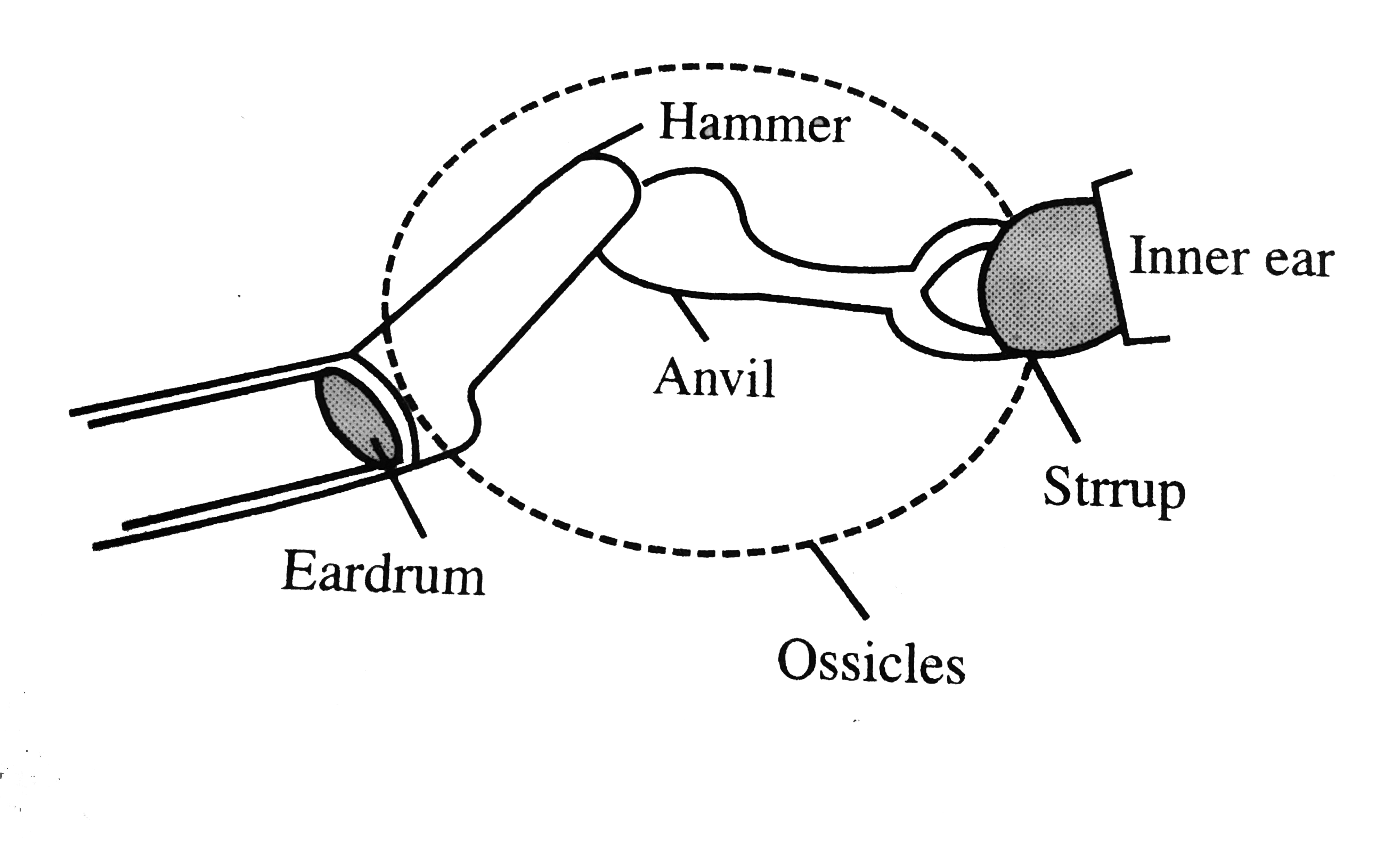Wastes may be sealed in concrete-filled drums and discharged to a depth of about 500 m. This specifice statement is ture for
γ- raduation pollutants
U.V. radiation pollutants
β- particle pollutants
All radioactive pollutants
The correct Answer is:D
Step by step video, text & image solution for Wastes may be sealed in concrete-filled drums and discharged to a depth of about 500 m. This specifice statement is ture for by Biology experts to help you in doubts & scoring excellent marks in Class 12 exams.
Updated on:21/07/2023Topper's Solved these Questions
- ENVIRONMENTAL ISSUESBook:AAKASH INSTITUTEChapter:ENVIRONMENTAL ISSUESExercise:ASSIGNMENT SECTION C
Explore 92 Videos
- ENVIRONMENTAL ISSUESBook:AAKASH INSTITUTEChapter:ENVIRONMENTAL ISSUESExercise:ASSIGNMENT SECTION D
Explore 15 Videos
- ENVIRONMENTAL ISSUESBook:AAKASH INSTITUTEChapter:ENVIRONMENTAL ISSUESExercise:ASSIGNMENT SECTION A
Explore 35 Videos
- ECOSYSTEMBook:AAKASH INSTITUTEChapter:ECOSYSTEMExercise:Section - D (Assertion - Reasion Type questions)
Explore 15 Videos
- EVOLUTIONBook:AAKASH INSTITUTEChapter:EVOLUTIONExercise:TRY YOURSELF
Explore 29 Videos
Similar Questions
Water is filled in a rectangular tank of size 3m×2m×1m. a. Find the total force exerted by the water on the bottom surface of the tank. b. cosider a vertical side of area 2m×1m. Take a horizontal strip of wide δx metre in this side, situated at a depth of x metre from the surface of water. Find the torque of the force calculate in part b. about the bottom edge of this side. e. Find the total torque by the water on the side about the bottom edge. neglect the atmospheric pressure and take =10ms−2.
View SolutionIn a 500mL of 0.5MCuSO4 solution, during electrolysis 1.5×1023 electron were passed using copper electrodes. Assume the volume of solution remains unchanged during electrolysis. Which of the following statements is/ are correect?
a. At the end of electrolysis, the concentration of the solution is 0.5M.
b.7.9g of Cu is deposited on the cathode.
c.4g of Cu is dissolved from the anode.
d.7.9g of Cu ions are discharged.
View Solution
Knowledge Check
Wastes may be sealed in concrete-filled drums and discharged to a depth of about 500 m. This specific statement is true for
ARadition pollutantsBU.V. radiation pollutantsCParticle pollutantsDRadioactive pollutantsWastes may be sealed in concrete-filled drums and discharged to a depth of about 500 m. This specific statement is true for
ARadiation pollutantsBU.V. radiation pollutantsCParticle pollutantsDAll radioactive pollutantsWastes may be sealed in concrete-filled drums and discharged to a depth of about 500 m. This specific statement is true for
ARadiation pollutantsBUV radiation pollutantsCParticle pollutantsDAll radioactive pollutants
The plastic tube in Fig. has a cross-sectional area of 5.00 cm2. The tube is filled with water until the short arm (of length d = 0.800 m) is full. Then the short arm is figure sealed and more water is gradually poured into the long arm. When the total height of water in the long arm reaches 2.80 m, the seal is on the verging of popping. What force is then on the seal?

View SolutionIt is possible to take a high quality photograph of a very fast moving object by illuminating the object for quite a small fraction of a second. You may have come across photographs of a bullet penetrating a banana or an apple in many text books or magazines. This is called 'stop action' photography because the fast moving object travels a very short distance during the time of illumination. Harold Edgerton, the inventor of stroboscope, was a pioneer of this kind of photography. A normal photographic plate works properly if it receives an energy of 4J during the exposure. To release this energy in a very small fraction of time, huge amount of power is required. Such huge power can not be generated directly from a battery because of its high internal resistance. To produce such power a capacitor is used. The time in which a capacitor discharges can be very short. Although, theoretically it would take a long time for a capacitor to discharge completely, it discharges almost completely in about 10 time constant. Consider the following situation A capacitor of 200muF storing 4J energy is made to discharge through a flash light in 2ms. This setup is used to take the picture of a bullet moving at a speed of 100m/s Assume that the flash light acts as a resistor and there is no other resistance in the circuit.
What is the initial current in the circuit
View SolutionIt is possible to take a high quality photograph of a very fast moving object by illuminating the object for quite a small fraction of a second. You may have come across photographs of a bullet penetrating a banana or an apple in many text books or magazines. This is called 'stop action' photography because the fast moving object travels a very short distance during the time of illumination. Harold Edgerton, the inventor of stroboscope, was a pioneer of this kind of photography. A normal photographic plate works properly if it receives an energy of 4J during the exposure. To release this energy in a very small fraction of time, huge amount of power is required. Such huge power can not be generated directly from a battery because of its high internal resistance. To produce such power a capacitor is used. The time in which a capacitor discharges can be very short. Although, theoretically it would take a long time for a capacitor to discharge completely, it discharges almost completely in about 10 time constant. Consider the following situation A capacitor of 200muF storing 4J energy is made to discharge through a flash light in 2ms. This setup is used to take the picture of a bullet moving at a speed of 100m/s Assume that the flash light acts as a resistor and there is no other resistance in the circuit.
What is the order of energy delivered to the flash light in 0.2 ms(approx).
View SolutionIt is possible to take a high quality photograph of a very fast moving object by illuminating the object for quite a small fraction of a second. You may have come across photographs of a bullet penetrating a banana or an apple in many text books or magazines. This is called 'stop action' photography because the fast moving object travels a very short distance during the time of illumination. Harold Edgerton, the inventor of stroboscope, was a pioneer of this kind of photography. A normal photographic plate works properly if it receives an energy of 4J during the exposure. To release this energy in a very small fraction of time, huge amount of power is required. Such huge power can not be generated directly from a battery because of its high internal resistance. To produce such power a capacitor is used. The time in which a capacitor discharges can be very short. Although, theoretically it would take a long time for a capacitor to discharge completely, it discharges almost completely in about 10 time constant. Consider the following situation A capacitor of 200muF storing 4J energy is made to discharge through a flash light in 2ms. This setup is used to take the picture of a bullet moving at a speed of 100m/s Assume that the flash light acts as a resistor and there is no other resistance in the circuit.
If we use a lens of power 10 diopters, the lens to photographic plate distance is 15cm and the bullet moves perpendicular to the principal axis, what is the distance covered by bullet as seen on photographic plate.
View Solution
When a sound wave enters the ear, it sets the eardrum into oscillation, which in turn causes oscillation of 3 tiny bones in the middle ear called ossicles. This oscillation is finally transmitted to the fluid filled in inner portion of the ear termed as inner ear, the motion of the fluid disturbs hair cells within the inner ear which transmit nerve impulses to the brain with the information that a sound is present. The theree bones present in the middle ear are named as hammer, anvil and stirrup. Out of these the stirrup is the smallest one and this only connects the middle ear to inner ear as shown in the figure below. The area of stirrup and its extent of connection with the inner ear limits the sensitivity of the human ear consider a person's ear whose moving part of the eardrum has an area of about 50mm2 and the area of stirrup is about 5mm2. The mass of ossicles is negligible. As a result, force exerted by sound wave in air on eardum and ossicles is same as the force exerted by ossicles on the inner ear. Consider a sound wave having maximum pressure fluctuation of 4×10−2Pa from its normal equilibrium pressure value which is equal to 105Pa. Frequency of sound wave in air is 332ms. Velocity of sound wave in fluid (present in inner ear) is 1500ms. Bulk modulus of air is 1.42×105Pa. Bulk modulus of fluid is 2.18×109Pa.
Q. With respect to information provided above, mark the correct statement.
View Solution